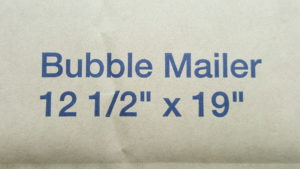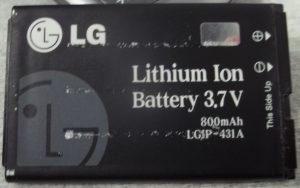If you are a shipper lithium cells or batteries in commerce you are likely aware of the current regulations applicable to their transport in commerce:
- Transportation solely within the U.S. (domestic) by all modes (highway, rail, vessel, & air) subject to the Hazardous Material Regulations (HMR) of the Pipeline and Hazardous Materials Safety Administration of the USDOT (PHMSA/USDOT).
- International transportation by vessel subject to the regulations of the International Maritime Organization (IMO).
- Domestic and international transportation by air subject to the regulations of the International Civil Aviation Administration (ICAO) but, more practically, those of the International Air Transport Association (IATA) which is used by the majority of the worlds air carriers.
- Domestic and international transportation with the U.S. Mail subject to the standards of the United States Postal Service (USPS).
The purpose of this article is to identify what are currently (as of 07.31.17) proposed revisions to the mailing standards of the USPS.
Note: Unless specifically referenced, for the purposes of this article the term “battery” or “batteries” should be assumed to include “cell” or “cells”.

Summary:
USPS is preparing to revise Publication 52, Hazardous, Restricted, and Perishable Mail, in various sections to provide new mailing standards for lithium batteries. The purpose is to align its mailing standards for the shipment of lithium batteries with the regulations of PHMSA/USDOT, ICAO (or IATA, if you please), and IMO. The regulations of those agencies pertaining to the transport of lithium batteries underwent significant changes within the last year and USPS feels it must change as well. However, the changes to the USPS standard will not be as drastic as for those other agencies since its regulations for the transport of lithium batteries and cells is already more limited and restrictive in its scope.
Also…
- This notice of proposed revision was published in the February 22, 2017 Federal Register.
- Written comments were to be received by 03.24.17.
- For further information, contact: Michelle Lassiter (202) 268.2414 or Kevin Gunther (202) 268.7208
- Implementation date: If it proceeds as planned, the Postal Service expects to provide for an implementation date approximately 60 days following notice of its adoption of these proposed revised mailing standards. Also, this, “Within the next several weeks (publication date: 02.22.17) the Postal Service intends to revise Publication 52…” In other words, “We don’t know”.
Like this article? Subscribe to my Monthly Newsletter No marketing emails! |
Proposed Revisions to USPS Mailing Standards:
Require DOT-approved lithium battery handling mark:
Currently Publication 52 requires certain packages of lithium batteries to either display what is known as the Lithium Battery Handling Label or to be marked with the same information as required by the label but without meeting the specifications for the label’s color and size. If published as proposed USPS will eliminate the marking option and instead require use of what is now known as the Lithium Battery Mark (mistakenly referred to by USPS as the DOT-approved lithium battery handling mark).
Though not clear from this proposed revision, USPS intends to allow mailers to use either the Lithium Battery Handling Label or the Lithium Battery Mark. Both of which are in a transitional acceptance period.
A lithium battery package mark that will remain unchanged appears below in its two available options. This mark must be displayed on packages of lithium metal batteries that are not packed with or installed in equipment, i.e. mailed without equipment.
- “Surface Mail Only, Primary Lithium Batteries – Forbidden for Transportation Aboard Passenger Aircraft”
Or…
- “Surface Mail Only, Lithium Metal Batteries – Forbidden for Transportation Aboard Passenger Aircraft”
Note: USPS does not allow the use of the Cargo Aircraft Only label used by both PHMSA and IATA.
Eliminate the requirement for accompanying documentation with mailings of lithium batteries:
Currently Publication 52 requires what is known as a Lithium Battery Safety Document to accompany the shipping paper (e.g. bill of lading) for shipments of lithium batteries that are required to display the Lithium Battery Handling Label or lithium battery mark described above. In other words, if your package must display the label/mark it must also have the Lithium Battery Safety Document. If published as proposed, USPS will eliminate the requirement for use of the Lithium Battery Safety Document entirely.
Add the new DOT Class 9 Lithium Battery hazard warning label to Publication 52, Exhibit 325.1, DOT Hazardous Materials Warning Labels: PROHIBITED IN THE MAIL.
During a transition period PHMSA is allowing the use of either the existing Class 9 Miscellaneous Hazmat label or the new Class 9 Lithium Battery HazMat label for certain packages of lithium batteries. Any package required by PHMSA’s HMR to display either of these labels cannot be shipped via USPS. If published as proposed USPS will merely acknowledge the existence of this new HazMat label and include it as an exhibit of what is not allowed to be shipped via USPS.
Several revisions to the packaging requirements:
- Require the outer packaging to be rigid and of adequate size to allow for display of the Lithium Battery Mark (aka: the DOT-approved lithium battery handling mark) on one side without being folded.
- Permit the use of padded or poly bags solely for button cell batteries installed in equipment when the batteries are afforded equivalent protection by the equipment.

Contact me with any questions you may have about the transportation of hazardous materials by air, highway, vessel, or rail International and Domestic Daniels Training Services, Inc. 815.821.1550 |
- Take no action with regard to the requirement in the PHMSA HMR to require the Lithium Battery Mark (aka: the DOT-approved lithium battery handling mark) on certain packages of lithium batteries when there are more than two packages in the consignment. This is because USPS has a definition of consignment that differs from other transportation regulations. The definition of a consignment used by USPS identifies a single parcel as the same as a consignment. Therefore, the number of parcels in the “consignment” is not a factor in shipping HazMat via USPS. From the publication: “The Postal Service would continue to define a consignment in postal terms as a single parcel, making any action regarding the PHMSA regulation unnecessary.”
- Prohibit t
 he transport by air of lithium ion and lithium polymer batteries not packed with or installed in equipment (i.e. mailed without equipment). Currently the USPS standard prohibits only the transport by air of lithium metal batteries mailed without equipment. If published as proposed USPS will extend this ban to lithium ion and lithium polymer batteries mailed without equipment.
he transport by air of lithium ion and lithium polymer batteries not packed with or installed in equipment (i.e. mailed without equipment). Currently the USPS standard prohibits only the transport by air of lithium metal batteries mailed without equipment. If published as proposed USPS will extend this ban to lithium ion and lithium polymer batteries mailed without equipment. - Revise the mailpiece quantity limitations for lithium-ion and lithium polymer batteries not packed with or installed in equipment (i.e. mailed without equipment) in surface transportation to align with the current USPS standard for lithium metal batteries. Currently the USPS standard allows each mailpiece to contain no more than eight (8) lithium ion/polymer cells or two (2) lithium ion/polymer batteries that also meet the battery capacity limitations of 20 Wh/cell and 100 Wh/battery. This will be revised to an aggregate mailpiece limit of five (5) pounds while retaining the battery capacity limitations. If published as proposed USPS will make its 5 pound per mailpiece limit apply to both lithium ion and lithium metal batteries when mailed without equipment. The battery capacity limitations will remain unchanged.
If you like this article, please share it using any of the social media platforms identified at the bottom of this article. You’ll look real smart recommending my articles! |
The good news about these proposed revisions is once in place they will better align the USPS standard with the regulations of other transportation agencies. This should make the transport of lithium batteries easier for both businesses and individual consumers who rely on the USPS network. Easier should mean ‘easier to understand’ and this will – hopefully – result in safer transportation of lithium batteries.


